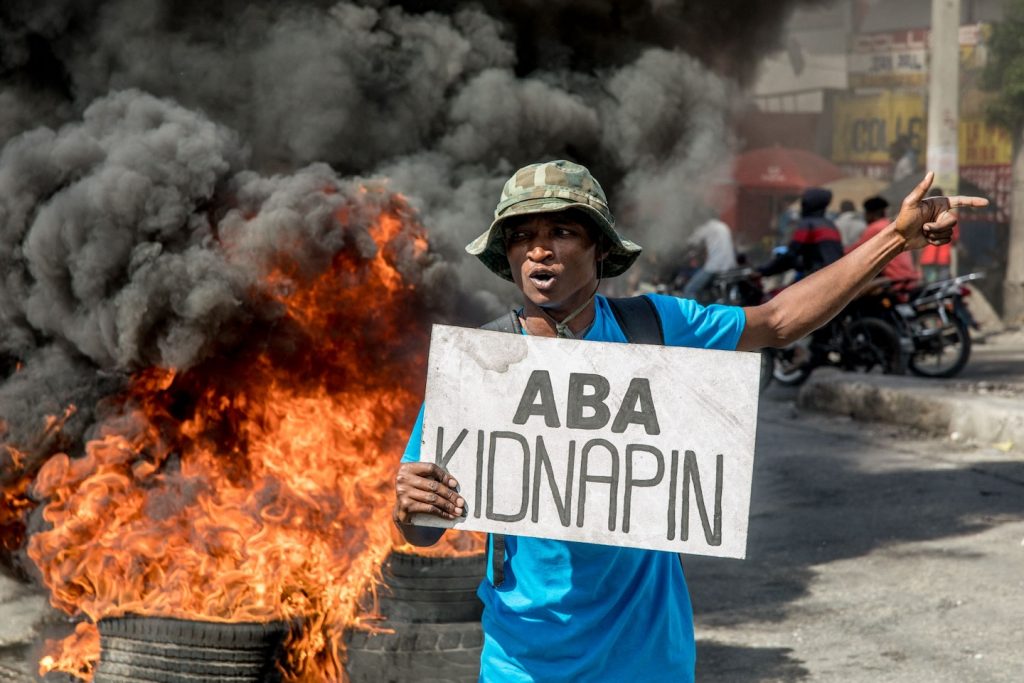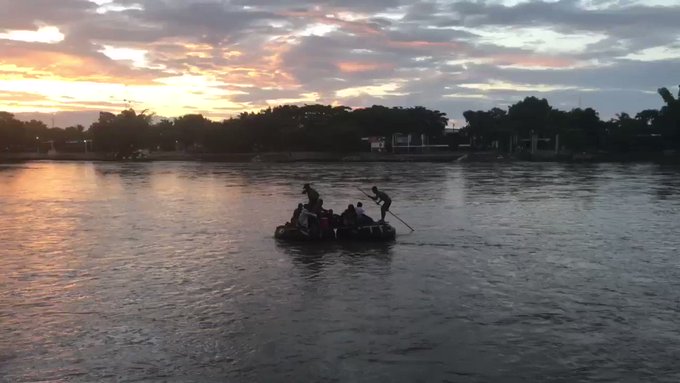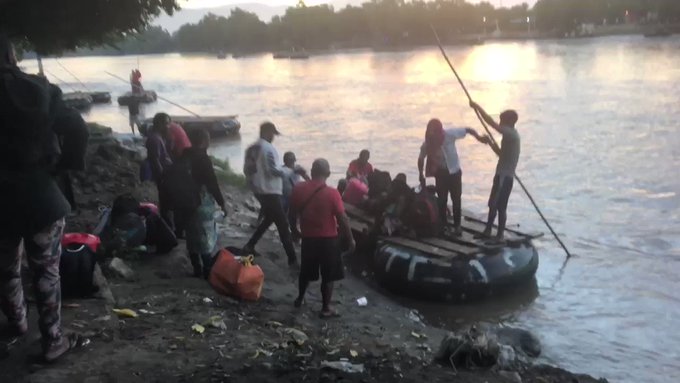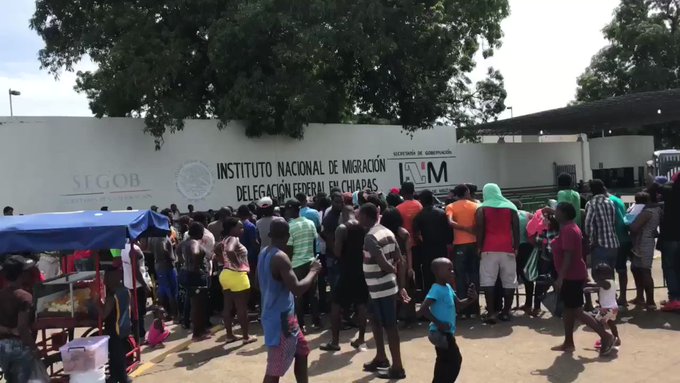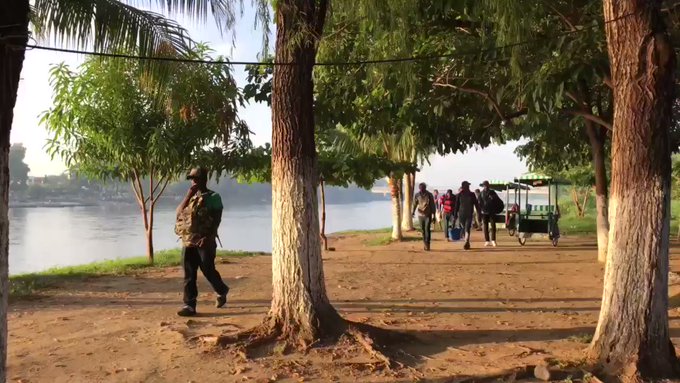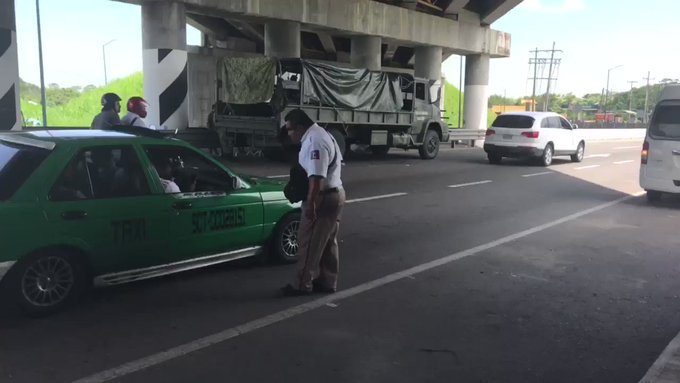by
Tim Murray

No doubt you have seen images of some of the more than 10,000 migrants who have streamed illegally into Canada from the United States at unofficial border crossings — for the most part in Manitoba and Quebec. What began as a trickle eight months ago has become a flood in August. The City of Montreal reported that while there were 50 per day in the first half of July, there are between 250 and 300 crossing illegally now.
The sheer logistics of processing, transporting, sheltering and feeding this latest surge of border-jumpers has overwhelmed the limited resources of the Canada Border Services Agency (CBSA). And the RCMP is pitching in too, smiling at migrants as they help them with their luggage. It seems that this fabled law enforcement agency has become an extension of the hospitality industry, a collection of bell hops and Walmart greeters. Or are they the public relations arm of the globalist government in Ottawa? Perhaps they should be wearing their ceremonial red serge uniforms as they chaperone illegals.
Amidst the chaos, make-shift shelters have been constructed and initial screening and vetting checks postponed. Because of the swell of refugee claims, the basic background check that would normally take 72 hours to complete will now take two months. Will Canada mimic Europe, overwhelmed by mass migration and the problems that ensue from it? The signs are ominous. The ship of state is drifting, and there is a flake at the helm.
This crisis caught authorities by surprise. But it shouldn’t have. When President Trump mused about suspending the Temporary Protected Status (TPS) for 60,000 Haitians, one could have expected that they would make a mad dash to the candy store up north. Especially when they got a personal invitation from Prime Minister Justin Trudeau, always anxious to play the role of the white knight of generosity and compassion. His twitter message was, “Regardless of who you are or where you came from, there’s always a place for you in Canada.” Come on in!
Trudeau’s hypocrisy was breathtaking. What the media failed to notice that Canada had a temporary program for displaced Haitian “quake-fugees” of its own, but it was wound down in August of 2016— under Justin Trudeau’s watch! So instead of telling Haitian asylum-seekers the truth, that the government was unprepared to receive them, the Prime Minister chose to grandstand, to contrast himself to the evil Trump. He was going to drive the Welcome Wagon and set up impromptu welcome stations along the border. The claimants would be bussed to Montreal, one of Canada’s ten self-styled “sanctuary cities”. Yes, Canada has them too. What columnist Daniel Greenfield called “the coalition of the self-righteous”.
Renegade city councils voted to permit illegal migrants to receive housing, avail themselves of food banks, libraries and other services with no questions asked about their immigration status. In sane times it would be unthinkable for the most junior level of government to refuse to cooperate with federal law enforcement officers. But these are not sane times. Instead, city law enforcement agencies have been ordered not to apprehend “undocumented” immigrants or indeed inquire into their immigration status. One gains the impression that the Trudeau administration is not terribly upset with this arrangement.
Taxpayers, however, have a different view. It should not come as a shock that 41% of Canadians polled by the Angus Reid Institute supported the statement that Canada was taking in too many refugees. And a Reuters poll conducted on March 8-9 found that all but 36% of respondents believed that those illegally crossing the border should not be allowed to remain in the country. They are not in love with the idea that queue jumpers who bypassed official border crossings to do an end run around the Canada-U.S. Safe Third Country agreement, can just walk into the country, declare that they are seeking refugee status, and while in limbo apply for work permits and receive social assistance. Simply put, the ongoing invasion is trying their patience.
No wonder. Former Deputy Immigration Minister John Manion once estimated that refugee claimant expenditures alone cost Canadian taxpayers around $2 billion/year. The cumulative cost in the fifteen years following 1985 would put it in the $30 billion range. And it doesn’t help when many deportation cases become mired in extended legal battles in the courts. But as costly as this proves to be, deportation is a bargain compared to the annual $30-35 billion net fiscal burden that largely unskilled migrant citizens impose on other Canadians. The fact is that these migrants do not earn enough income to pay the taxes necessary to defray the costs of the social services provided to them. In the case of Syrian migrants, it was found that after one year of residency, only one in ten (12%) had found employment.
This is not a recipe for smooth integration, and it bodes ill for their Canadian-born children. Already, some 43% of second generation visible minority youth in Canada feel themselves to be alienated victims. The myth of Canadian ‘Exceptionalism’, of our having found the secret formula for ethnic and racial harmony, is wearing thin on the ground. The jury is in. Canada has a limited absorptive capacity. Cities like Vancouver are suffering from ethnic indigestion. Too many too fast and without the necessary resources to help them. Rather than fit into the nation, many newcomers are fitting into ethnic enclaves that have grown exponentially . Liberal commentators call this diversity, but others call it cultural fragmentation and emergent tribalism. The downstream costs are incalculable. Public safety and security may exact the greatest toll.

All of this is the bitter harvest of the infamous “Singh decision” handed down by the Supreme Court of Canada in 1985, when our learned judges determined that Canada’s Charter of Rights and Freedoms meant that all “persons,” not just citizens, were entitled to full Charter protection simply by having their feet planted on Canadian soil. Since then illegal migrants are like the guests on Groucho Marx’s “You Bet Your Life”. Say the magic words, “I am a refugee” and you win the prize. All they need to do is get here. That’s it. And the easiest way to do that is to walk through an unguarded border crossing. Presto, you’re in. Getting you out, on the other hand, can take 3-5 years, assuming that you don’t play hide and seek.
The trouble with Canada’s refugee system is that, as Margaret Thatcher would have said, “Eventually you run out of other people’s money.” The Canadian Welfare State, or any welfare state, cannot survive the crushing burden that untold numbers of failed state migrants will place upon it. The late Nobel Peace Prize winning economist Milton Friedman was right. You can have the welfare state or you can have open borders, but you can’t have both. Unlimited generosity is not sustainable.
In order to pre-empt a nativist backlash, Public Safety Minister Ralph Goodale assured Canadians that crossing the border illegally was not an automatic free ticket to citizenship. But Goodale was disingenuous. He neglected to mention that Canada will not deport people to 12 designated countries and locations, mainly in Africa and the Middle East — unless they stand convicted of a crime or a human rights infraction or are deemed to be a security risk. According to the latest available data supplied by the Immigration and Refugee Board, almost one in four people who were allowed to make a claim in the first nine months of 2016 were from one of these areas.
Many of them are Somali claimants who made up the bulk of illegal border crossers in Emerson, Manitoba. They are the beneficiaries of what is known as an “administrative deferral of removal.” Temporary bans can be removed at any time of course, but if recent history is any guide, these claimants will be allowed time to apply for permanent residency. All of this proves asylum-shopping works. Shop around and you’ll soon find out that Canada is a soft touch.
Now for the dirty little secret of Canada’s refugee system. Roughly half of refugee claimants who are deported are not “removed”. They don’t show up at the appointed place at the appointed time.
To illustrate the point, it might be helpful to consider the testimony of former senior immigration enforcement officer David Richardson. While Richardson was careful to point out that he left the department in 2003, an officer he spoke with at Pearson International airport confirmed that, in his words, “Not much has changed on the refugee front, at least in Toronto.”
Richardson continued:
When I worked in Removals, sending failed claimants back to the U.S. at Buffalo N.Y., less than 50% of failed claimants showed up for removal. At that time the Fort Erie Point of Entry (POE) alone was taking in over 5,000 claims a year. Multiply that by the numbers taken in at the major airports and POEs across the country and it could be conservatively estimated that approximately 65 to 70 thousand claims are received a yea r, easily. Now (since) these other POEs were getting the same removal numbers as Fort Erie as I am sure they were — based on my conversations with fellow officers in my position as Union Rep for Southern Ontario — then you can safely estimate that 20-30 thousand claimants were no-shows for removals. Incredibly, the department’s response to these numbers was that the no-shows left on their own! Yeah, I know, I was dumbfounded too.
Richardson added that since departments only keep stats for the most recent five years, the total number of no-shows is unknown. There is no running total. And to this day no one knows how many deportees or illegals still reside in the country as no solid exit data exists as no exit controls are in place.
One-time Immigration Minister Joe Volpe once estimated that there were 120,000 illegals in Canada. Some are visa overstays — temporary foreigner workers and students — but many are rejected refugee claimants who have disappeared into the warm welcoming bosom of our growing list of sanctuary cities. It is not hard to disappear in Toronto, or any other ‘progressive’ jurisdiction where an illegal migrant on the lam can find a safe harbour and a cheap labour employer that stands ready to hire them.
Meanwhile, in the wake of 9/11 federal governments have sought to assuage public anxiety by promising more resources for border security while they quietly lay off staff. This is what David Richardson calls “The Big Lie”. Veterans of the Canadian Security Intelligence Service (CSIS) would say the same thing. They don’t need changes in the law to do their job. They just need more people. If there was a will, there would be a way. But there isn’t.
In surveying recent decades of immigration and refugee policy and performance, one can conclude two things. The system is broken. And no government has had a sincere wish to fix it. Certainly not the reigning Trudeau Liberals. Instead of developing a plan of action to stem the surge of illegal immigration, the government is responding with reactionary band-aid solutions driven largely by political posturing with little understanding of what constitutes sound asylum policy. Rather than composing a coherent strategy, they are haphazardly importing America’s problems.
So why then did we vote for them? Why do politicians with no interest in controlling migrant flows or maintaining the integrity of the system continue to be elected? The awful truth is that fifty years of social engineering and open borders propaganda have left their mark. Belief in national sovereignty has been going out of fashion, nowhere more so than in Canada. To the point that a Canadian Prime Minister can now proudly boast that ours is the world’s first “post-national” state, a microcosm of the dis-United Nations. When Barack Obama told a Montreal audience last spring that he was a “citizen of the world” , they clapped loudly. They found another brother-in-arms, as if the preening charlatan in the Prime Minister’s Office was not enough. I mean, how many Quislings do Canadians need?
If you want to know how Justin Trudeau views the nation, then read the words spoken by Serge Bouchereau, the organizer of an event outside Montreal’s Olympic Stadium to welcome Haitian asylum-seekers. “This is a vast, rich country that can welcome many, many more people who are in bad situations and can’t stay in their countries.”
How many more you ask? The sky is the limit and the queue is endless.
No problem. After all, who needs a functional refugee and immigration policy in a borderless world?

 Charlotte Cuthbertson@charlottecuthbo
Charlotte Cuthbertson@charlottecuthbo
